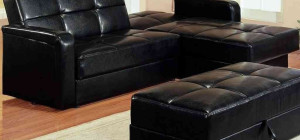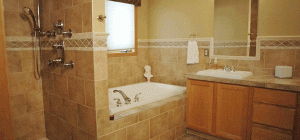 In the condition of a fire, good design and maintenance of the building are essential to help keep occupants safe, to minimize the spread of fire, and to provide acceptable safety conditions for rescue teams. Time is of the essence: the best fire protection solutions take into account the specific design of each building and how it is used by the occupants, combining both active and passive measures in a holistic approach.
In the condition of a fire, good design and maintenance of the building are essential to help keep occupants safe, to minimize the spread of fire, and to provide acceptable safety conditions for rescue teams. Time is of the essence: the best fire protection solutions take into account the specific design of each building and how it is used by the occupants, combining both active and passive measures in a holistic approach.
The challenge is to control a fire after it has reached its maximum phase – a point known as a “flashover”. The purpose of any building must be to limit the fire as long as possible to allow the evacuation of persons and the safe operation of rescue teams.
This can be achieved by combining a series of measures that we call passive protection and active protection.
Passive fire protection is a group of systems that compartmentalize a building through walls and floors against fire and structural protection, preventing the rapid spread of fire and protecting a building structure as long as possible to provide time for occupants to escape.
Active protection measures such as fire alarms, sprinklers, fire extinguishers, hydrant, and smoke systems can help limit fire, protect property and life. These systems require automation to operate efficiently, so when fire and smoke are detected in an enclosure, a fire/smoke alarm will warn those inside the building. Sprinkler systems and fire extinguishers can help slow down the fire until firefighters can intervene. Smoke exhaust systems, such as roof hatches or mechanical smoke exhaust through fans and flues, can extend the time to flashover or completely prevent it from occurring. If you are looking for effective systems, you can try Herbert Williams fire equipment for sale in Toronto, Canada, or online.
Finally, active systems cannot operate without passive fire safety materials and the two approaches must work in tandem – a sprinkler system cannot extinguish a fire in the building if the ceiling to which it is attached has collapsed.
Principles of passive fire protection
Partitioning requires walls, ceilings and structural elements that have tested fire resistance characteristics. It is vital that these compartmentalization elements ensure the necessary performance in real situations, not just in the simpler configurations of fire tests. For example, corners, connections to other walls or ceilings, suspension and hanging elements, fastening methods and joints are all critical points and should be analyzed and tested in real conditions.
All openings, joints, pipe or cable crossings must be adequately protected, as these penetrations can become a means of spreading fire and smoke and therefore undermine the principle of compartmentalisation.
Joints and openings in large areas, such as floors in ordinary utility windows, must be completely and correctly sealed, using the appropriate products and systems used to seal these joints and openings. Such gaps also include any joints or open spaces due to improper handling or joints left for the projected structural movement.
One of the most important design considerations is the inclusion of several escape routes and, in the case of tall buildings, at least two stairwells located at a great distance from each other. Stair houses must be under pressure, designed to be fire-fighting compartments that keep smoke out of them. Stair houses and, in general, the escape route should always be kept free of combustible materials and made, as far as possible, of non-combustible materials.
Some national regulations allow the construction of high-rise residential buildings with even a single staircase, provided that it is properly designed, while others allow a performance-based approach (so-called fire safety design), which requires designers to be the ones to evaluate the number of stairs and evacuation times.
The key passive protection measures are super-efficient safety zones or compartments – which are uninhabited floors or rooms, designed to withstand the spread of fire much longer than normal.
From the perspective of evacuation, the refuge floors have several advantages: they are a resting place for the evacuees; the possibility of having smoky stairs or elevator shafts is reduced; can be used to protect people with disabilities and/or injured evacuees; can be used as a command point for rescue teams to aid the evacuation action, and can serve as a basis for firefighting.
Of course, any passive fire protection system is as good as the installation process. In Romania, the systems must comply with European legislation and local design regulations P118.
Finding the optimal balance
High-quality construction, the effective combination of passive and active protection measures, the design of escape routes, the installation and permanent risk management are all essential. All this contributes to the safety of occupants and rescue teams, as well as to the protection of the building during a fire.
Closely related to these issues is the specification of appropriate materials and systems, which must be tested in real conditions, together with a competent installation, inspection and maintenance, in order to provide peace of mind to the occupants and owners of buildings.







